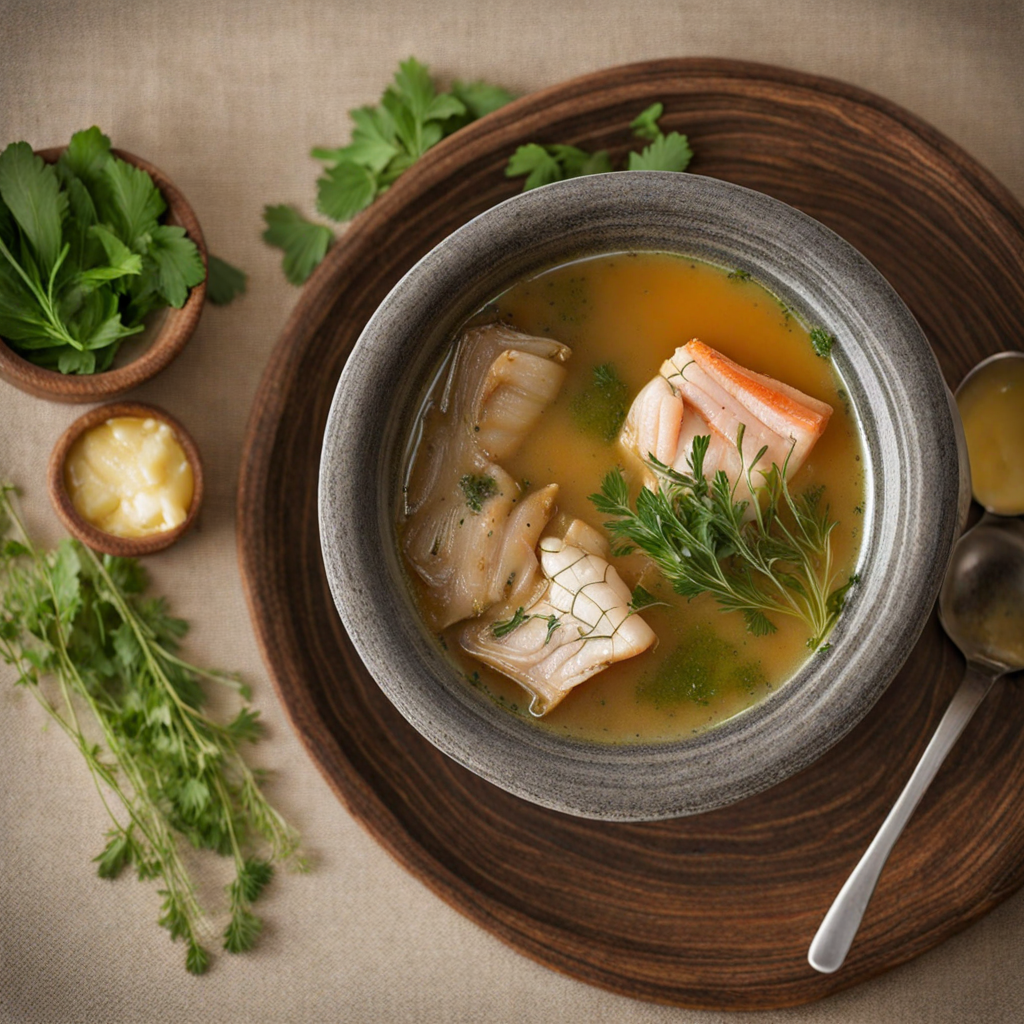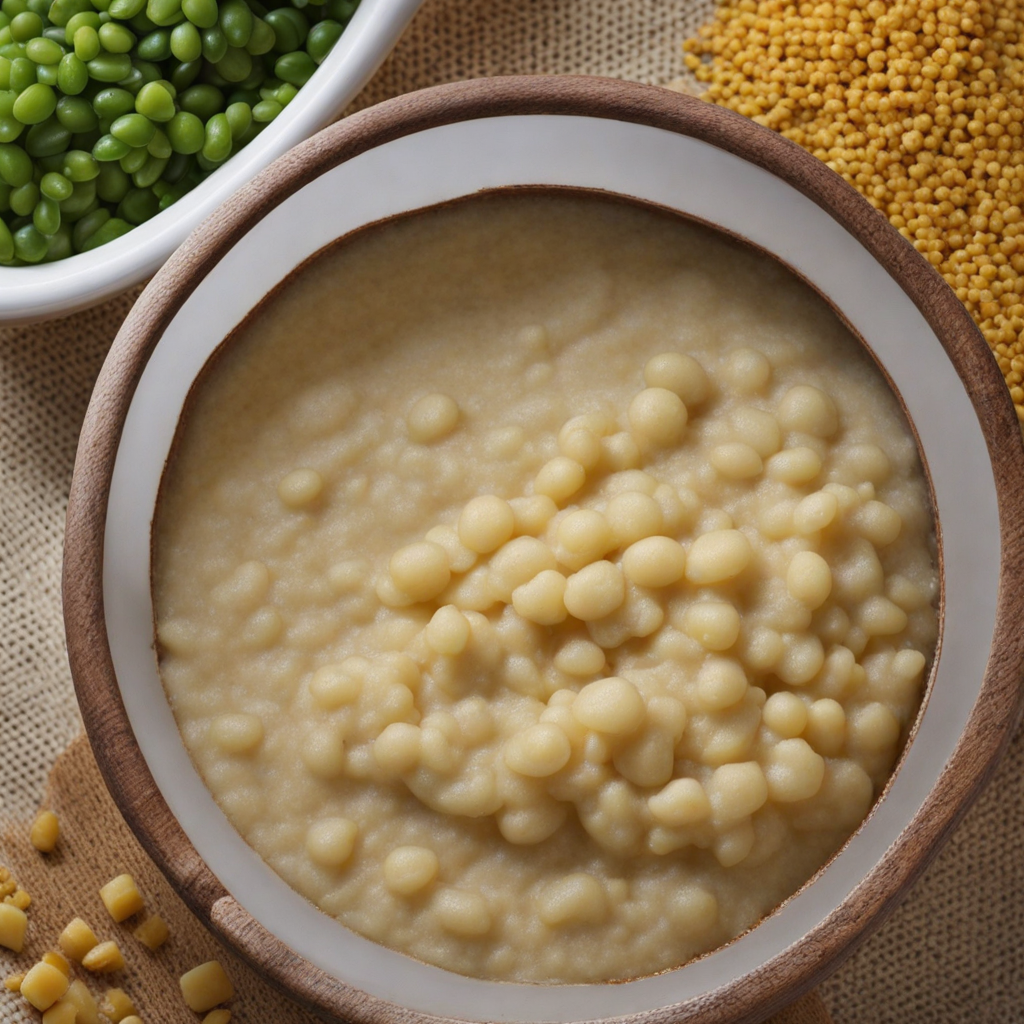Marrabenta Broth
Marrabenta Broth is a vibrant and hearty dish hailing from Mozambique, embodying the rich culinary traditions of the region. This broth is a melange of flavors, typically featuring a base of chicken or beef stock simmered with an array of local spices, herbs, and vegetables. The use of fresh ingredients such as tomatoes, onions, and garlic creates a fragrant aroma that beckons anyone nearby. The broth is often enriched with a touch of chili, giving it a mild heat that complements the savory elements without overpowering them. The result is a warm and inviting dish that reflects the communal spirit of Mozambican cooking, often served in large pots for family gatherings or celebrations.
How It Became This Dish
Caldo de Marrabenta: A Culinary Journey Through Mozambique Origin and Historical Context Caldo de Marrabenta is a traditional Mozambican dish that reflects the rich tapestry of cultural influences found within the country. Mozambique, situated along the southeastern coast of Africa, has a history marked by the confluence of indigenous cultures, Arab traders, and Portuguese colonial influences. The name “Caldo de Marrabenta” translates to “Marrabenta broth,” with “marrabenta” referring to a popular dance and music style that has its roots in the urban areas of Mozambique, particularly in the capital, Maputo. The origins of this dish can be traced back to the 19th century when the Portuguese began to establish trading posts along the Mozambican coast. The amalgamation of different culinary traditions helped shape the local cuisine, with influences from African, Arab, and Portuguese cooking. Caldo de Marrabenta embodies this fusion, as it typically features a hearty broth enriched with local ingredients such as meat, vegetables, and spices. The dish not only nourishes the body but also serves as a reminder of the country’s diverse cultural heritage. Cultural Significance Caldo de Marrabenta is more than just a meal; it is a symbol of community and family. In Mozambique, food plays a central role in social gatherings and celebrations. The preparation and sharing of Caldo de Marrabenta often bring families and communities together, embodying the spirit of hospitality that is prevalent in Mozambican culture. It is commonly served during festive occasions and communal events, reinforcing social bonds and cultural identity. The dish is also associated with the Marrabenta music and dance genre, which emerged in the 1940s and 1950s as a form of cultural expression and resistance against colonial rule. The lively rhythms of Marrabenta often accompany gatherings where Caldo de Marrabenta is served, creating a vibrant atmosphere that celebrates Mozambican identity. The connection between food and music highlights the integral role that culinary traditions play in the broader cultural narrative of Mozambique. Ingredients and Preparation The beauty of Caldo de Marrabenta lies in its adaptability, allowing for variations based on available ingredients and personal preferences. The base of the dish is a flavorful broth, traditionally made from beef or chicken, simmered with onions, garlic, and a blend of spices that may include paprika, bay leaves, and cumin. The use of local ingredients, such as cassava, sweet potatoes, and leafy greens, further enriches the dish, adding both nutrition and flavor. To prepare Caldo de Marrabenta, the meat is first browned, then combined with water and aromatics, allowing the flavors to meld together. Once the broth is fragrant, vegetables are added, often accompanied by starches such as rice or maize, which absorb the rich flavors of the soup. The result is a comforting and hearty dish that reflects the agricultural bounty of Mozambique. Evolution and Modern Interpretations As Mozambique has evolved, so too has Caldo de Marrabenta. In recent years, globalization and urbanization have influenced culinary practices, leading to new interpretations of traditional dishes. While the classic recipe remains beloved, modern chefs and home cooks are experimenting with ingredients and techniques, introducing elements from international cuisines. For instance, some contemporary versions of Caldo de Marrabenta may incorporate seafood, showcasing the country’s access to fresh fish from its coastline. Additionally, the dish may be garnished with fresh herbs, citrus, or even chili peppers to appeal to diverse palates. As Mozambique becomes more integrated into the global culinary scene, Caldo de Marrabenta serves as a canvas for creativity while still honoring its traditional roots. Caldo de Marrabenta in the Global Culinary Landscape The rise of interest in African cuisine has brought dishes like Caldo de Marrabenta to the forefront of the culinary world. Food enthusiasts and chefs are increasingly recognizing the depth and variety of African flavors, leading to a growing appreciation for Mozambican cuisine. Food festivals, culinary tours, and global networking opportunities have allowed Caldo de Marrabenta to reach a wider audience, showcasing the dish as an embodiment of Mozambique’s rich culinary heritage. In cities worldwide, restaurants specializing in African or specifically Mozambican cuisine are adding Caldo de Marrabenta to their menus, highlighting its cultural significance and delicious flavors. This exposure not only helps preserve traditional recipes but also encourages cross-cultural dialogue through food. Conclusion: A Legacy of Flavor and Community Caldo de Marrabenta is a dish that encapsulates the essence of Mozambique—its history, culture, and resilience. From its origins in the early 19th century to its place in modern cuisine, this hearty broth continues to be a source of nourishment and joy for many. It is a testament to the enduring power of food as a connector of people, a marker of cultural identity, and a celebration of community. As Mozambique continues to evolve, so too will Caldo de Marrabenta, adapting to new influences while remaining rooted in tradition. The dish is not merely a culinary delight; it is a living narrative, a harmonious blend of flavors that tells the story of a nation, its people, and their enduring spirit. Whether enjoyed in a bustling urban setting or a quiet family gathering, Caldo de Marrabenta remains a cherished symbol of Mozambique’s rich culinary heritage and communal bonds.
You may like
Discover local flavors from Mozambique







